Monocalcium Dicalcium Tricalcium Phosphate, Calcium Phosphate Monobasic Dibasic Tribasic USP NF BP Ph Eur FCC Food Grade Suppliers Exporters, Manufacturers
Calcium Phosphate Monobasic
CAS Number: 7758-23-8 for Anhydrous & 10031-30-8 for Monohydrate Monocalcium Phosphate FCC Food Grade Suppliers Exporters, Manufacturers
Please visit Safety Data Sheet of Monocalcium Phosphate or Calcium Phosphate Monobasic FCC Food Grade Manufacturers.
Monobasic Calcium Phosphate or Monocalcium Phosphate FCC Food Grade Specifications
Monocalcium Phosphate; Calcium Biphosphate; Acid Calcium Phosphate
Ca(H2PO4)2 Formula weight, anhydrous 234.05
Ca(H2PO4)2-H2O Formula wt, monohydrate 252.07
CAS: anhydrous 7758-23-8
INS: 341(i) CAS: monohydrate 10031-30-8
DESCRIPTION
Calcium Phosphate, Monobasic, occurs as white crystals or granules or as a granular powder. It is anhydrous or contains one molecule of water of hydration, but because of its deliquescent nature, more than the calculated amount of water may be present. It is sparingly soluble in water and is insoluble in alcohol.
Function: Buffer; dough conditioner; firming agent; leavening agent; nutrient; yeast food; sequestrant.
REQUIREMENTS
Labeling: Indicate the state of hydration.
Identification:
A. Dissolve 100 mg of sample by warming it in a mixture of 2 mL of 2.7 N hydrochloric acid and 8 mL of water. Add 5 mL of ammonium oxalate. A white precipitate forms.
B. Add ammonium molybdate TS to a warm solution of sample in a slight excess of nitric acid. A yellow precipitate of ammonium phosphomolybdate forms.
Assay: Anhydrous: Not less than 16.8% and not more than 18.3% of Ca; Monohydrate: Not less than 15.9% and not more than 17.7% of Ca.
Arsenic: Not more than 3 mg/kg.
Fluoride: Not more than 0.005%.
Lead: Not more than 2 mg/kg.
Loss on Drying: Monohydrate: Not more than 1%.
Loss on Ignition Anhydrous: Between 14.0% and 15.5%.
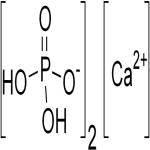
Please visit Hazard Statement of Monocalcium Phosphate or Calcium Phosphate Monobasic FCC Food Grade Suppliers.
Calcium Phosphate Dibasic
CAS Number: 7757-93-9 for anhydrous & 7789-77-7 for dihydrate Dicalcium Phosphate USP BP Ph Eur FCC Food Grade Suppliers Exporters, Manufacturers
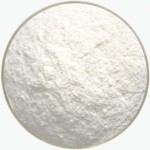
Please visit Safety Data Sheet of Dicalcium Phosphate or Calcium Phosphate Dibasic USP BP Ph Eur FCC Food Grade Manufacturers.
Dibasic Calcium Phosphate Dihydrate Dicalcium Phosphate Dihydrate USP Grade Specifications:
CaHPO4-2H2O --- 172.09
Phosphoric acid, calcium salt (1:1);
Calcium phosphate, dihydrate (1:1) CAS 7789-77-7
DEFINITION
Dibasic Calcium Phosphate Dihydrate contains two molecules of water of hydration. It contains NLT 98.0% and NMT 105.0% of dibasic calcium phosphate dihydrate (CaHPO4-2H2O).
IDENTIFICATION
A.
Sample: 0.1 g of Dibasic Calcium Phosphate Dihydrate
Analysis: Dissolve the Sample by warming in 10 mL of 2 N hydrochloric acid. Add 2.5 mL of ammonia dropwise, with shaking, and then add 5 mL of ammonium oxalate.
Acceptance criteria: A white precipitate is formed.
B.
Sample: 0.1 g of Dibasic Calcium Phosphate Dihydrate
Analysis: Dissolve the Sample in 5 mL of diluted nitric acid. Warm the solution to 70C and add 2 mL of 10% ammonium molybdate solution (freshly prepared).
Acceptance criteria: A yellow precipitate of ammonium phosphomolybdate is formed.
Carbonate:
Sample: 1.0 g of Dibasic Calcium Phosphate Dihydrate
Analysis: Mix the Sample with 5 mL of carbon dioxide-free water, and immediately add 2 mL of hydrochloric acid.
Acceptance criteria: No effervescence occurs.
Chloride and Sulfate, Chloride:
Standard: 0.70 mL of 0.010 N hydrochloric acid
Sample: 0.2 g of of Dibasic Calcium Phosphate Dihydrate
Analysis: To the Sample add 20 mL of water and 13 mL of diluted nitric acid, and warm gently, if necessary, to completely dissolve. Dilute with water to 100 mL, and filter if necessary. To 50 mL of the filtrate add 1 mL of silver nitrate.
Acceptance criteria: The turbidity of the Sample does not exceed that of the Standard (NMT 0.25%).
Chloride and Sulfate, Sulfate:
Standard: 1.0 mL of 0.010 N sulfuric acid
Sample: 0.5 g of Dibasic Calcium Phosphate Dihydrate
Analysis: To the Sample add 5 mL of water and 5 mL of diluted hydrochloric acid, and warm gently, if necessary, to completely dissolve. Dilute with water to 100 mL, and filter if necessary. To 20 mL of the filtrate add 1 mL of diluted hydrochloric acid and dilute with water to 50 mL. Add 1 mL of barium chloride.
Acceptance criteria: The turbidity of the Sample does not exceed that of the Standard (NMT 0.5%).
Arsenic: To pass the test. --- NMT 3 µg/g
Barium:
Sample: 0.5 g Dibasic Calcium Phosphate Dihydrate
Analysis: Heat the Sample to boiling with 10 mL of water, and add 1 mL of hydrochloric acid dropwise, stirring after each addition. Allow to cool, and filter, if necessary. To the filtrate add 2 mL of potassium sulfate.
Acceptance criteria: No turbidity is produced within 10 min.
Limit of Acid-Insoluble Substances: To pass the test. --- (NMT 0.2%).
Limit of Fluoride: To pass the test. --- NMT 50 ppm
Loss on Ignition: Sample: 1 g of Dibasic Calcium Phosphate Dihydrate
Analysis: Ignite the Sample at 800C to 825C to constant weight.
Acceptance criteria: 24.5% to 26.5%
Anhydrous Dibasic Calcium Phosphate or Dicalcium Phosphate Anhydrous USP Grade Specifications:
CaHPO4 --- 136.06
Phosphoric acid, calcium salt (1:1);
Calcium phosphate (1:1) CAS 7757-93-9
DEFINITION
Anhydrous Dibasic Calcium Phosphate contains NLT 98.0% and NMT 103.0% of anhydrous dibasic calcium phosphate (CaHPO4).
IDENTIFICATION
A.
Sample: 0.1 g of Anhydrous Dibasic Calcium Phosphate
Analysis: Dissolve the Sample by warming in 10 mL of 2 N hydrochloric acid. Add 2.5 mL of ammonia dropwise, with shaking, and then add 5 mL of ammonium oxalate.
Acceptance criteria: A white precipitate is formed.
B.
Sample: 0.1 g of Anhydrous Dibasic Calcium Phosphate
Analysis: Dissolve the Sample in 5 mL of diluted nitric acid. Warm the solution to 70C and add 2 mL of 10% ammonium molybdate solution (freshly prepared).
Acceptance criteria: A yellow precipitate of ammonium phosphomolybdate is formed.
Carbonate:
Sample: 1.0 g of Anhydrous Dibasic Calcium Phosphate
Analysis: Mix the Sample with 5 mL of carbon dioxide-free water, and immediately add 2 mL of hydrochloric acid.
Acceptance criteria: No effervescence occurs.
Chloride and Sulfate, Chloride:
Standard: 0.70 mL of 0.010 N hydrochloric acid
Sample: 0.2 g of Anhydrous Dibasic Calcium Phosphate
Analysis: To the Sample add 20 mL of water and 13 mL of diluted nitric acid, and warm gently, if necessary, to completely dissolve. Dilute with water to 100 mL, and filter if necessary. To 50 mL of the filtrate add 1 mL of silver nitrate.
Acceptance criteria: The turbidity of the Sample does not exceed that of the Standard (NMT 0.25%).
Chloride and Sulfate, Sulfate:
Standard: 1.0 mL of 0.010 N sulfuric acid
Sample: 0.5 g of Anhydrous Dibasic Calcium Phosphate
Analysis: To the Sample add 5 mL of water and 5 mL of diluted hydrochloric acid, and warm gently, if necessary, to completely dissolve. Dilute with water to 100 mL, and filter if necessary. To 20 mL of the filtrate add 1 mL of diluted hydrochloric acid and dilute with water to 50 mL. Add 1 mL of barium chloride.
Acceptance criteria: The turbidity of the Sample does not exceed that of the Standard (NMT 0.5%).
Arsenic: To pass the test. --- NMT 3 µg/g
Barium:
Sample: 0.5 g Anhydrous Dibasic Calcium Phosphate
Analysis: Heat the Sample to boiling with 10 mL of water, and add 1 mL of hydrochloric acid dropwise, stirring after each addition. Allow to cool, and filter if necessary. To the filtrate add 2 mL of potassium sulfate.
Acceptance criteria: No turbidity is produced within 10 min.
Limit of Acid-Insoluble Substances: To pass the test. --- (NMT 0.2%).
Limit of Fluoride: To pass the test. --- NMT 50 ppm
Loss on Ignition:
Sample: 1 g of Anhydrous Dibasic Calcium Phosphate
Analysis: Ignite the Sample at 800C to 825C to constant weight.
Acceptance criteria: 6.6% to 8.5%
Specifications of Dibasic Calcium Phosphate or Dicalcium Phosphate Dihydrate BP Ph Eur Grade
Calcium Hydrogen Phosphate Dihydrate
CaHPO4,2H2O -- 172.1 -- CAS 7789-77-7
DEFINITION
Content: Dibasic Calcium Phosphate 98.0 per cent to 105.0 per cent.
CHARACTERS
Appearance: White, crystalline powder.
Solubility: Practically insoluble in cold water and in alcohol. It dissolves in dilute hydrochloric acid and in dilute nitric acid.
IDENTIFICATION
A. Dissolve 0.1 g in a mixture of 5 ml of dilute nitric acid and 5 ml of water. The solution gives reaction of phosphates.
B. 5 mg gives reaction of calcium.
C. It complies with the limits of the assay.
TESTS
Solution S: Dissolve 2.5 g in 20 ml of dilute hydrochloric acid, filter if necessary and add dilute ammonia until a precipitate is formed. Add just sufficient dilute hydrochloric acid to dissolve the precipitate and dilute to 50 ml with distilled water.
Carbonates
Shake 0.5 g with 5 ml of carbon dioxide-free water and add 1 ml of hydrochloric acid. No effervescence is produced.
Chlorides: Maximum 330 ppm.
Dissolve 0.5 g in a mixture of 1 ml of nitric acid and 10 ml of water and dilute to 50 ml with water. 15 ml of the solution complies with the limit test for chlorides.
Fluorides: Maximum 100 ppm.
Sulphates: Maximum 0.5 per cent.
Arsenic: Maximum 10 ppm.
Barium: To 10 ml of solution S add 0.5 ml of dilute sulphuric acid. After 15 min, any opalescence in the solution is not more intense than that in a mixture of 10 ml of solution S and 0.5 ml of distilled water.
Iron: Maximum 400 ppm.
Heavy metals: Maximum 40 ppm.
1 ml of 0.1 M sodium edetate is equivalent to 17.21 mg of CaHPO4,2H2O.
Specifications of Calcium Phosphate Dibasic Anhydrous Dihydrate FCC Food Grade
Dicalcium Phosphate
CaHPO4 Formula wt, anhydrous 136.06
CaHPO4-2H2O Formula weight, dihydrate 172.09
INS: 341(ii) CAS: anhydrous 7757-93-9
CAS: dihydrate 7789-77-7
DESCRIPTION
Calcium Phosphate, Dibasic, occurs as a white powder. It is anhydrous or contains two molecules of water of hydration. It is stable in air. It is insoluble in alcohol, is practically insoluble in water, but is readily soluble in dilute hydrochloric and nitric acids.
Function: Leavening agent; dough conditioner; nutrient; yeast food.
REQUIREMENTS
Labeling: Indicate whether it is anhydrous or the dihydrate.
Identification:
A. Dissolve about 100 mg of sample by warming it with a mixture of 5 mL of 2.7 N hydrochloric acid and 5 mL of water. Add 2.5 mL of 6 N ammonium hydroxide, drop-wise, with shaking, and then add 5 mL of ammonium oxalate. A white precipitate forms.
B. Add 10 mL of ammonium molybdate to 10 mL of a warm 1:100 aqueous solution in a slight excess of nitric acid. A yellow precipitate of ammonium phosphomolybdate forms.
Assay Anhydrous or Dihydrate: Not less than 97.0% and not more than 105.0% Dibasic Calcium Phosphate.
Arsenic: Not more than 3 mg/kg.
Fluoride: Not more than 0.005%.
Lead: Not more than 2 mg/kg.
Loss on Ignition Anhydrous: Between 7.0% and 8.5%; Dihydrate: Between 24.5% and 26.5%.
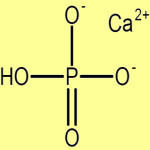
Please visit Hazard Statement of Dicalcium Phosphate or Calcium Phosphate Dibasic USP BP Ph Eur FCC Food Grade Suppliers.
Calcium Phosphate Tribasic
CAS Number: 7758-87-4 or 1306-06-5 or 12167-74-7 or 62974-97-4 Tricalcium Phosphate USP NF BP Ph Eur FCC Food Grade Suppliers Exporters, Manufacturers
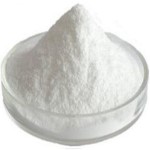
Please visit Safety Data Sheet of Tricalcium Phosphate or Calcium Phosphate Tribasic USP NF BP Ph Eur FCC Food Grade Manufacturers.
Tribasic Calcium Phosphate USP NF Grade Specifications:
Ca5(OH)(PO4)3 --- 502.31
Calcium hydroxide phosphate CAS 12167-74-7
DEFINITION
Tribasic Calcium Phosphate consists of a variable mixture of calcium phosphates with the approximate composition (10CaO3P2O5-H2O). It contains NLT 34.0% and NMT 40.0% of calcium (Ca).
IDENTIFICATION
A.
Sample solution: Dissolve 100 mg in 5 mL of diluted nitric acid.
Analysis: Warm the Sample solution and add 2 mL ammonium molybdate.
Acceptance criteria: A yellow precipitate is formed.
B.
Analysis: Dissolve the Sample by warming in 10 mL of 2 N hydrochloric acid. Add 2.5 mL of ammonia dropwise, with shaking, and then add 5 mL of ammonium oxalate.
Acceptance criteria: A white precipitate is formed.
Standard: 1.0 mL of 0.020 N hydrochloric acid
Sample: 0.500 g of Tribasic Calcium Phosphate
Analysis: Dissolve the Sample in 25 mL of 2 N nitric acid and add 1 mL of silver nitrate.
Acceptance criteria: NMT 0.14%
Chloride and Sulfate -Sulfate:
Standard: 1.0 mL of 0.020 N sulfuric acid
Sample: 0.500 g of Tribasic Calcium Phosphate
Analysis: Dissolve the Sample in the smallest possible amount of 3 N hydrochloric acid. Dilute with water to 100 mL, and filter, if necessary. To 25 mL of the filtrate add 1 mL of barium chloride.
Acceptance criteria: NMT 0.8%
Arsenic: To pass the test. --- 3 ppm
Barium:
Sample: 500 mg of Tribasic Calcium Phosphate
Analysis: Mix the Sample with 10 mL of water, heat, add hydrochloric acid, dropwise, until solution is affected, and then add 2 drops of the acid in excess. Filter, and add to the filtrate 1 mL of potassium sulfate.
Acceptance criteria: No turbidity appears within 15 min.
Carbonate:
Sample: 2 g of Tribasic Calcium Phosphate
Analysis: Mix the Sample with 20 mL of water, and add 3 N hydrochloric acid, dropwise, to effect solution.
Acceptance criteria: No effervescence is produced.
Acid-Insoluble Substances:
Analysis: If an insoluble residue remains in the test for Carbonate, boil the solution, filter, wash the residue well with hot water until the last washing is free from chloride, and ignite the residue to constant weight.
Acceptance criteria: NMT 0.2%; the weight of the residue is NMT 4 mg.
Dibasic Salt and Calcium Oxide: To pass the test.
Limit of Fluoride: To pass the test. --- NMT 75 ppm
Limit of Nitrate: To pass the test.
Water-Soluble Substances: To pass the test. --- NMT 0.5%.
Loss on Ignition:
Analysis: Ignite at 800C for 30 min.
Acceptance criteria: NMT 8.0%
Packaging and Storage: Preserve in well-closed containers.
Specifications of Tribasic Calcium Phosphate BP Ph Eur Grade
Calcium Phosphate BP
CAS 7758-23-8
DEFINITION
Calcium phosphate consists of a mixture of calcium phosphates. It contains not less than 35.0 per cent and not more than the equivalent of 40.0 per cent of Ca (Ar 40.08).
CHARACTERS
A white or almost white powder, practically insoluble in water. It dissolves in dilute hydrochloric acid and in dilute nitric acid.
IDENTIFICATION
A. Dissolve 0.1 g in 5 ml of a 25 per cent V/V solution of nitric acid R. The solution gives reaction (b) of phosphates (2.3.1).
B. It gives reaction (b) of calcium (2.3.1). Filter before adding potassium ferrocyanide solution R.
C. It complies with the limits of the assay.
TESTS
Solution S
Dissolve 2.50 g in 20 ml of dilute hydrochloric acid. If the solution is not clear, filter it. Add dilute ammonia drop-wise until a precipitate is formed. Dissolve the precipitate by adding dilute hydrochloric acid and dilute to 50 ml with distilled water.
Chlorides
Dissolve 0.22 g in a mixture of 1 ml of nitric acid and 10 ml of water and dilute to 100 ml with water. 15 ml of the solution complies with the limit test for chlorides (0.15 per cent).
Fluorides
Not more than 75 ppm of F, determined potentiometrically (2.2.36, Method I) using a fluoride-selective indicator electrode and a silver-silver chloride reference electrode.
Sulphates
Dilute 1 ml of solution S to 25 ml with distilled water 15 ml of the solution complies with the limit test for sulphates (0.5 per cent).
Arsenic
5 ml of solution S complies with limit test A for arsenic (4 ppm).
Iron
Dilute 0.5 ml of solution S to 10 ml with water R. The solution complies with the limit test for iron (400 ppm).
Heavy metals
Dilute 13 ml of solution S to 20 ml with water. 12 ml of the solution complies with limit test A for heavy metals (30 ppm).
Acid-insoluble matter
Dissolve 5.0 g in a mixture of 10 ml of hydrochloric acid and 30 ml of water. Filter, wash the residue with water and dry to constant mass at 100C to 105C. The residue weighs not more than 10 mg (0.2 per cent).
Loss on ignition
Not more than 8.0 per cent, determined on 1.000 g by ignition at 800C for 30 min.
Calcium Phosphate, Tribasic FCC Food Grade
Tricalcium Phosphate; Precipitated Calcium Phosphate
Calcium Hydroxyapatite
Ca3(PO4)2 Formula weight 310.18
Ca5OH(PO4)3 Formula weight 502.31
Ca10(OH)2(PO4)6 Formula weight 1004.61
INS: 341(iii) CAS: 7758-87-4
CAS: 1306-06-5
CAS: 62974-97-4
DESCRIPTION
Calcium Phosphate, Tribasic, occurs as a white powder that is stable in air. It consists of a variable mixture of calcium phosphates. It is insoluble in alcohol and almost insoluble in water, but it dissolves readily in dilute hydrochloric and nitric acids.
Function: Ant caking agent; buffer; nutrient; clouding agent.
REQUIREMENTS
Identification
A. Add ammonium molybdate TS to a warm solution of sample in a slight excess of nitric acid. A yellow precipitate forms.
B. Dissolve about 100 mg of sample by warming it with 5 mL of 2.7 N hydrochloric acid and 5 mL of water; while shaking, add 1 mL of 6 N ammonium hydroxide, drop-wise and then add 5 mL of ammonium oxalate TS. A white precipitate forms.
Assay: Not less than 34.0% and not more than 40.0% of calcium (Ca).
Arsenic: Not more than 3 mg/kg.
Fluoride: Not more than 0.0075%.
Lead: Not more than 2 mg/kg.
Loss on Ignition: Not more than 10.0%.
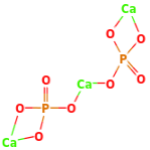
Please visit Hazard Statement of Tricalcium Phosphate or Calcium Phosphate Tribasic USP NF BP Ph Eur FCC Food Grade Suppliers.
Monocalcium Phosphate or Calcium Phosphate Monobasic CAS Number 7758-23-8 for Anhydrous & 10031-30-8 for Monohydrate, Dicalcium Phosphate or Calcium Phosphate Dibasic CAS Number 7757-93-9 for anhydrous & 7789-77-7 for dihydrate & Tricalcium Phosphate or Calcium Phosphate Tribasic CAS Number 7758-87-4 or 1306-06-5 or 12167-74-7 or 62974-97-4 Supplier Exporter, Manufacturer:
Annie Chemie P Ltd
Mumbai 4000010, INDIA
With Agents and offices in UAE, USA, Europe.
e-mail: info@anniechemie.com
Copyright and Usual Disclaimer is Applicable.
May 30, 2025
Exporters to USA, Canada, UK, Europe, UAE, Nigeria, Algeria, Turkey, Mexico, Brazil, Chile, Argentina, Australia, Dubai etc.
Perfection is made up of small things and that is a big thing.
